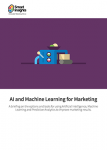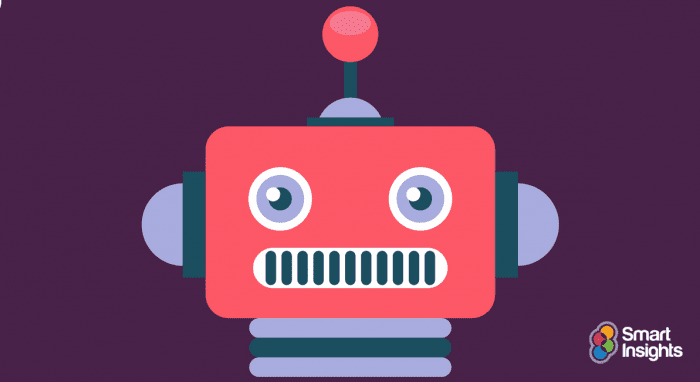Chatbots that say “I’m sorry, I don’t understand that” fail in today’s consumer-brand interactions – here’s why!
At MarTech San Francisco 2017, Nick Pandolfi of Google’s Global Product Partnerships claimed that language is the new user interface. But chatbots are still a nascent technology, and they come with positives and negatives. People are willing to use them and find them valuable, especially during purchasing, but if a company’s chatbot is poorly designed and leads to a negative interaction between the consumer and brand, then that person will likely never come back. The more conversation technology improves, then, the more consumer expectations will evolve, too.
As chatbots become more fundamental to consumer-facing experiences, chatbot designers must make their creations more human by improving natural language processing and contextual responses. Because those marketers who don’t recognize the vital role conversational design will soon play in the brand-consumer relationship are the ones who will leave their companies without a voice.
Adopting a customer relationship management mindset
As consumers take more control over their brand experiences, they expect companies to provide concierge services that empower them to take charge. For this reason, social media and customer support have converged, and chatbots will only enliven this experience by allowing brands to act as personal concierges for consumers online. Facebook, for instance, is committed to delivering brands utility through chatbots while promoting them via the bots’ Discover feature.
Smart home technologies such as Siri, Alexa, or Google Assistant have already familiarized many consumers with chatbots. Even those who don’t use these products understand what these technologies are capable of, and marketers must be ready to fulfill this shifting consumer-experience expectation if they want to keep their companies viable in the marketplace.
By connecting to CRM systems, chatbots can provide a host of individual services that further tailor the consumer experience. In automotive sales, for example, chatbots like Carla, a product of CarLabs, can already handle most of the post-purchase interactions in automotive sales. From scheduling service appointments to talking prices to communicating recall notices, Carla handles many CRM tasks while personalizing the experience for each user. Such interactions have the potential to spread across the digital ecosystem — from social networks to smart home devices — and provide consumers with seamless and customized experiences no matter where they are.
The future of conversational design
Better conversational design leads to range of benefits, from smoother online experiences to increased revenue. But companies will see the most notable transformations in consumer-brand interactions and relationships.
- Chatbots will save customers time and enhance later human-to-human conversations. Conversational agents can help consumers retrieve relevant information such as weather reports, bus schedules, package statuses, and currency exchange rates faster than online searches or apps. The information and ease the bots provide can then leader to deeper and more relevant human-to-human conversations, as such conversations are needed later in the process.
- They’ll engage customers through emotional connections. While humans sleep, conversational agents are available 24/7, freeing companies from the need to stay staffed day and night. Even though 75% of consumers still say they want to be able to distinguish between a human and a chatbot during communications, AI personality infusion also means that conversational agents can now build emotional connections for more engaging experiences.
- They’ll provide personalization at scale. Chatbots can help marketers automate one-on-one communications, personalizing questions to provide better experiences in context with consumer history. As data-driven personalization becomes more common, consumer expectations of customized service will grow, further necessitating better conversational agents.
Still, these capabilities are possible only if chatbots evolve. And marketers who want to focus on conversational design can rely on these three features to enhance their AI assistants:
1. Create intelligent assistance across platforms
Currently, social media platforms use two types of bots: rule-based ones and intelligence-powered ones. The former frustrate audiences with their limited uses; the latter provide more authentic conversations that better meet evolving customer needs.
With consumers increasingly contacting brands through social media, however, chatbots represent the first line of contact for many. If an interaction proves negative, then that lowers the odds that any human interaction will go well. Not only do more responsive, AI-powered conversational agents help foster later human-to-human interactions, but they also increase a brand’s marketplace presence.
Customers are everywhere, so companies must be, too. By staying updated on the latest tools like Chattypeople that make it easy and quick to create a bot, marketers can ensure that consumers experience seamless transitions on any online platform — whether that platform is Twitter, Slack, WeChat, or Facebook.
2. Bolster consumer interactions
Consumers already expect chatbots to respond with personalized information. Soon, they’ll expect chatbots to anticipate their needs and provide relevant recommendations, and designers must meet that demand.
For instance, Microsoft is now promoting and optimizing Cortana in new Skype apps with these features in mind. Cortana can jump into group chats to schedule reminders, make restaurant reservations, and find movie reviews when friends talk about relevant topics. Though Facebook’s “M” Messenger assistant offers similar functionality, Cortana has bigger plans in the business world. Microsoft wants to bring its chatbot into conference rooms and offices around the globe, providing an AI concierge that can take notes, set schedules, and guide visitors.
3. Integrate with email marketing
Marketers should integrate chatbots with emails to create better nurturing campaigns. Sales funnels depend on multiplatform nurturing, and chatbots can fulfil that need by keeping marketing messages at the top of consumer minds while also collecting information to design better campaigns.
Nothing frustrates consumers more than receiving redundant information or having to repeat information already given. Chatbots should speak to email campaigns and CRM databases, pulling information to personalize each conversation while collecting information from consumers to ensure future communications reach beyond bots. In this way, humans can optimize and enhance the consumer’s experience with the brand, not simply regurgitate it.
Chatbots aren’t ready to replace humans — not yet, at least. But already they can do more than most consumers (and companies) give them credit for. As the benefits of chatbots grow, so will consumer expectations and so should the consumer experience. With a new generation of consumers and consumption, marketers must be ready to provide the personalized experiences those users will soon crave.


